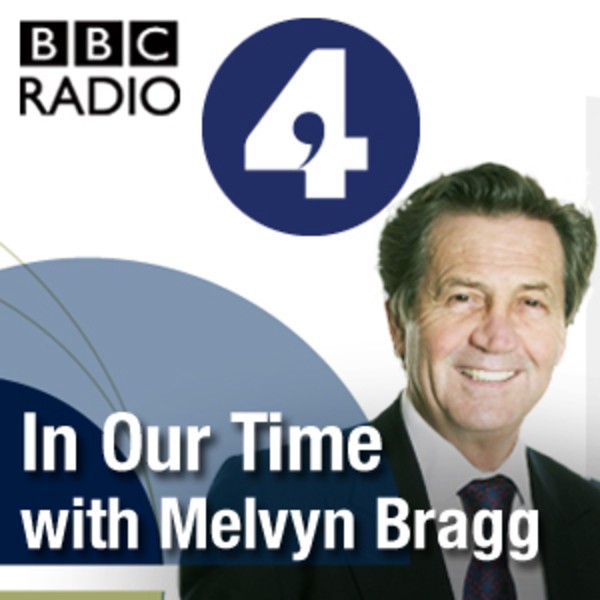
Nizami Ganjavi
Loading player...
Melvyn Bragg and guests discuss one of the greatest romantic poets in Persian literature. Nizami Ganjavi (c1141–1209) is was born in the city of Ganja in what is now Azerbaijan and his popularity soon spread throughout the Persian-speaking lands and beyond. Nizami is best known for his Khamsa, a set of five epic poems that contains a famous retelling of the tragic love story of King Khosrow II (c570-628) and the Christian princess Shirin (unknown-628) and the legend of Layla and Majnun. Not only did he write romances: his poetry also displays a dazzling knowledge of philosophy, astronomy, botany and the life of Alexander the Great.With Christine van Ruymbeke
Professor of Persian Literature and Culture at the University of CambridgeNarguess Farzad
Senior Lecturer in Persian Studies at SOAS, University of LondonAndDominic Parviz Brookshaw
Professor of Persian Literature and Iranian Culture at the University of OxfordProducer: Simon TillotsonReading list:Laurence Binyon, The Poems of Nizami (The Studio Limited, 1928)Barbara Brend, Treasures of Herat: Two Manuscripts of the Khamsah of Nizami in the British Library (Gingko, 2020)Barbara Brend, The Emperor Akbar’s Khamsa of Nizami (British Library, 1995)J-C. Burgel and C. van Ruymbeke, A Key to the Treasure of the Hakim: Artistic and Humanistic Aspects of Nizami Ganjavi’s Khamsa (Leiden University Press, 2011)Nizami Ganjavi (trans. P.J. Chelkowski), Mirror of the Invisible World: Tales from the Khamseh of Nizami (Metropolitan Museum of Art, 1975)Nizami Ganjavi (trans. Dick Davis), Layli and Majnun (Penguin Books, 2021)Nizami Ganjavi (trans. Rudolf Gelpke), The Story of Layla and Majnun (first published 1966: Omega Publications, 1997)Nizami Ganjavi (trans. Rudolf Gelpke), The Story of the Seven Princesses (Bruno Cassirer Ltd, 1976)Nizami Ganjavi (trans. Julie Scott Meisami, The Haft Paykar: A Medieval Persian Romance (Oxford University Press, 1995)Nizami Ganjavi (trans. Colin Turner), Layla and Majnun (Blake Publishing, 1997)
Dominic Parviz Brookshaw, Hafiz and His Contemporaries: Poetry, Performance and Patronage in Fourteenth-Century Iran (Bloomsbury, 2019)Julie Scott Meisami, Medieval Persian Court Poetry (Princeton University Press, 2014)Asghar Seyed-Gohrab, Layli and Majnun: Love, Madness and Mystic Longing in Nizami’s Epic Romance (Brill, 2003)Kamran Talattof, Jerome W. Clinton, and K. Allin Luther, The Poetry of Nizami Ganjavi: Knowledge, Love, and Rhetoric (Palgrave, 2000)C. van Ruymbeke, Science and Poetry in Medieval Persia: The Botany of Nizami's Khamsa (Cambridge University Press, 2007) In Our Time is a BBC Studios Audio Production
Professor of Persian Literature and Culture at the University of CambridgeNarguess Farzad
Senior Lecturer in Persian Studies at SOAS, University of LondonAndDominic Parviz Brookshaw
Professor of Persian Literature and Iranian Culture at the University of OxfordProducer: Simon TillotsonReading list:Laurence Binyon, The Poems of Nizami (The Studio Limited, 1928)Barbara Brend, Treasures of Herat: Two Manuscripts of the Khamsah of Nizami in the British Library (Gingko, 2020)Barbara Brend, The Emperor Akbar’s Khamsa of Nizami (British Library, 1995)J-C. Burgel and C. van Ruymbeke, A Key to the Treasure of the Hakim: Artistic and Humanistic Aspects of Nizami Ganjavi’s Khamsa (Leiden University Press, 2011)Nizami Ganjavi (trans. P.J. Chelkowski), Mirror of the Invisible World: Tales from the Khamseh of Nizami (Metropolitan Museum of Art, 1975)Nizami Ganjavi (trans. Dick Davis), Layli and Majnun (Penguin Books, 2021)Nizami Ganjavi (trans. Rudolf Gelpke), The Story of Layla and Majnun (first published 1966: Omega Publications, 1997)Nizami Ganjavi (trans. Rudolf Gelpke), The Story of the Seven Princesses (Bruno Cassirer Ltd, 1976)Nizami Ganjavi (trans. Julie Scott Meisami, The Haft Paykar: A Medieval Persian Romance (Oxford University Press, 1995)Nizami Ganjavi (trans. Colin Turner), Layla and Majnun (Blake Publishing, 1997)
Dominic Parviz Brookshaw, Hafiz and His Contemporaries: Poetry, Performance and Patronage in Fourteenth-Century Iran (Bloomsbury, 2019)Julie Scott Meisami, Medieval Persian Court Poetry (Princeton University Press, 2014)Asghar Seyed-Gohrab, Layli and Majnun: Love, Madness and Mystic Longing in Nizami’s Epic Romance (Brill, 2003)Kamran Talattof, Jerome W. Clinton, and K. Allin Luther, The Poetry of Nizami Ganjavi: Knowledge, Love, and Rhetoric (Palgrave, 2000)C. van Ruymbeke, Science and Poetry in Medieval Persia: The Botany of Nizami's Khamsa (Cambridge University Press, 2007) In Our Time is a BBC Studios Audio Production